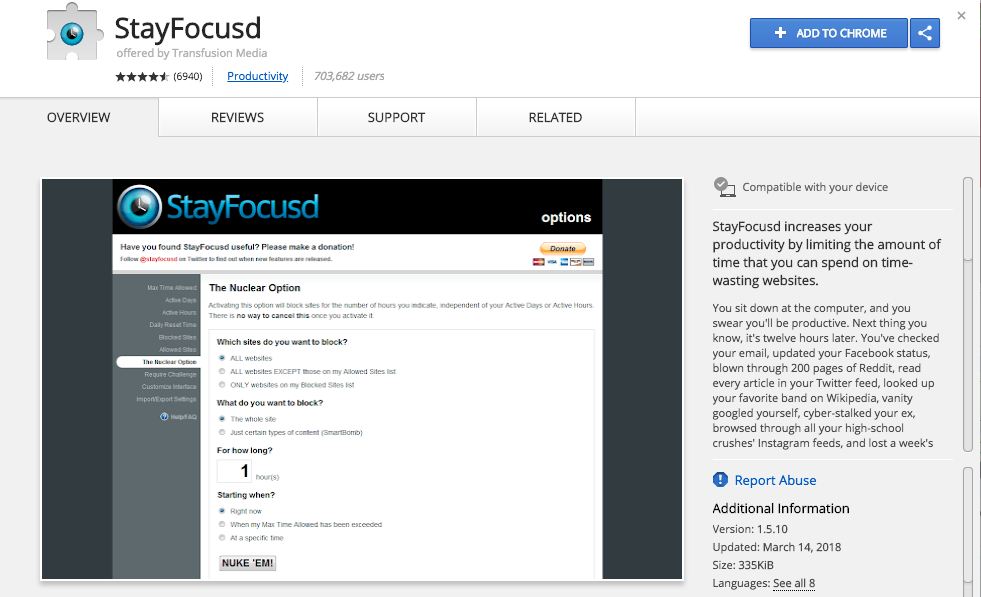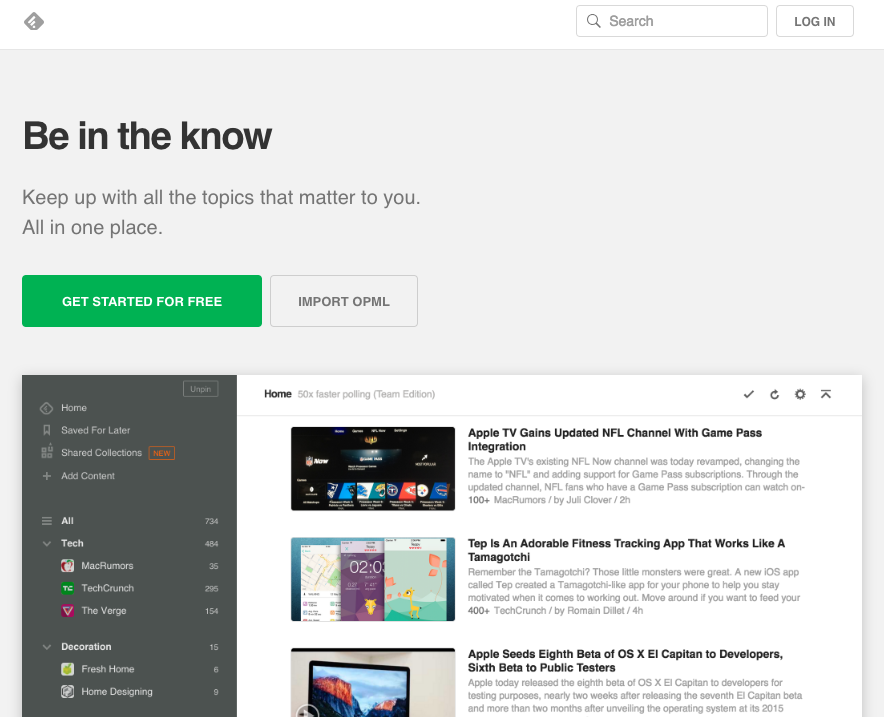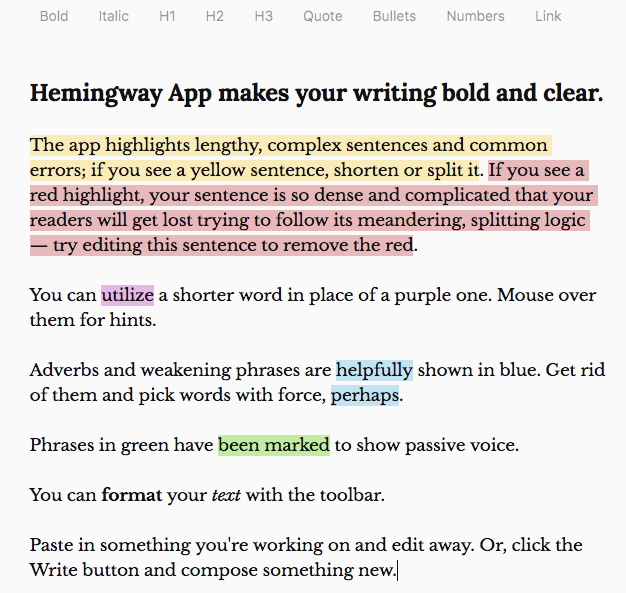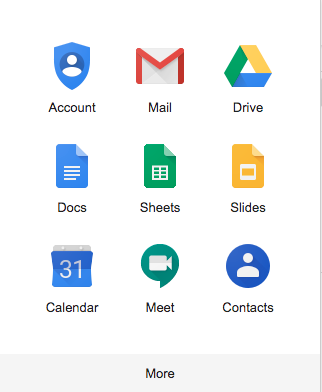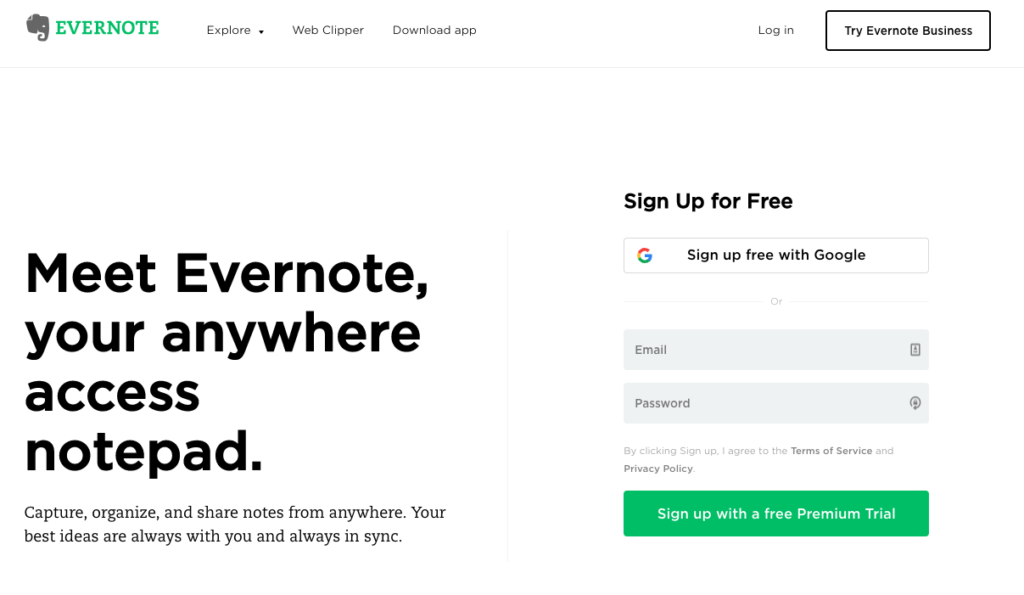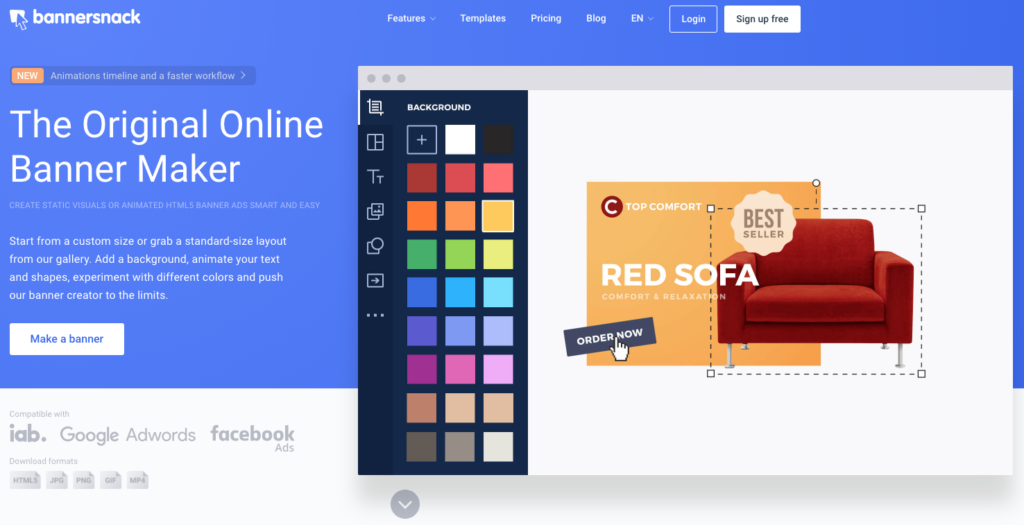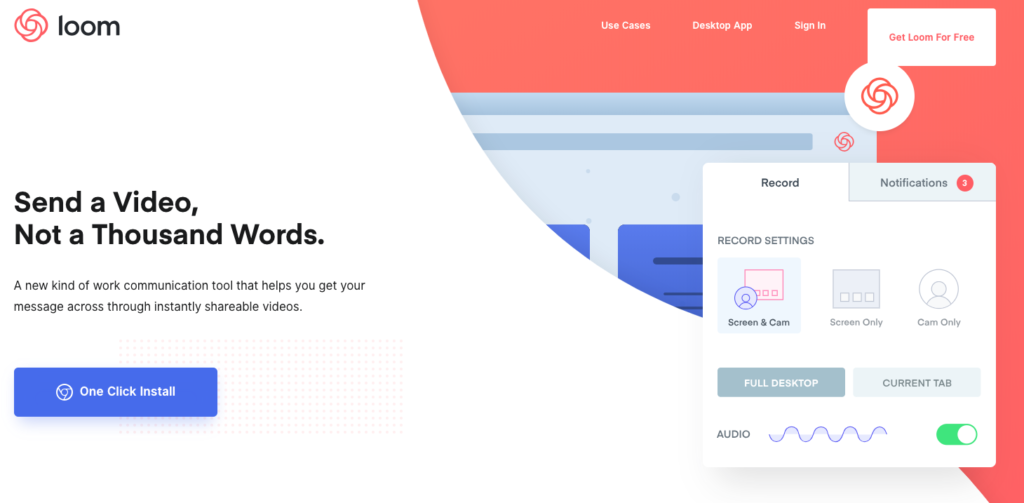We’re all blessed with the same amount of hours in each day. It’s just that some of us seem to make more out of our time than others. This is the essence of productivity: meaningfully improving your output rate on a meaningful task.
Obviously, as a blogger, it would be a wondrous thing to be more productive. The more you can produce, the more ROI you get from the activity.
Apart from simple focus and mental fortitude, there are a variety of tools out there nowadays to help writers write more. I certainly use my share of productivity tools. In addition, I’m always trying new ones out to see which ones give me an edge.
But I wanted to see what other top marketers are using to get more work done. So I reached out to some writer friends and put together a list of the top productivity tools for bloggers.
1. StayFocusd
StayFocusd is actually something I’ve used for a while. Focus is at the core of productivity (and no amount of nootropics overcome a lack of focus). StayFocusd, as the name suggests, helps you focus on what matters.
Here’s the way Stefan Debois, CEO of Survey Anyplace, describes it:
“The challenge when writing is that you are easily distracted by things like ‘just checking Facebook.’ With this plugin, you can limit the amount of time you spend on specific websites. I use it in combination with putting my phone on ‘Do not disturb’ mode to be more productive when writing.”
Sidenote: I also put my phone on “Do Not Disturb” at all times now, and it’s a game changer. Not just for productivity, but you also feel less stressed and on-edge, because you aren’t dealing with a constant barrage of “must-attend-to” notifications. Worth a try!
2. Content Gems
Content Gems is a tool I had not heard of until reaching out to expert marketers for this list.
Basically, it is a content discovery tool that allows you to build up a reserve of content to curate and share. It works in every industry, so it’s an especially useful tool for those bloggers and consultants who span many clients or industries.
Here’s how Matt Bentley, CEO of CanIRank, puts it:
“When you’re blogging for multiple clients, it can be hard to stay on top of what’s hot in every industry. ContentGems is a powerful curation tool that will make it seem like you’re a plugged-in industry insider, even if you’re brand new.”
Also, I’m not sure if I’d consider CanIRank a “productivity tool” per se, but it is a great tool if you care about SEO at all (which you should).
3. Ahrefs
Another SEO tool: Ahrefs.
Ahrefs is personally one of my favorite products and usually using the tool on a daily basis. It’s a joy to use. You can get insane keyword insights, analyze competitors’ sites, and track your rankings.
Of course, there are several great SEO tools out there. SEMRush, Accuranker, and Moz are a few of my favorites.
Here’s Jennifer Pepper, Marketing Manager, Content Creation at Unbounce, talking about which SEO tools she uses:
“…in terms of being especially efficient, it comes down to the keyword research I do in Google Keyword Planner, RankTrackr, and Ahrefs that can make or break a large piece. If you’re writing for any business, you want to make sure your topics are based in something there’s already meaningful organic interest in. RankTrackr and Ahrefs are go-to’s for me.”
4. Feedly
Another content discovery tool that is worth checking into is Feedly. This one is a bit broader than keeping a tab on trending content; you can also track keywords, YouTube channels, and Tweets. It also integrates with several other productivity tools, such as Slack, Evernote, and Trello.
As Holly C. Winn, Founder of Wordsmith Worthy, writes:
“The two tools I cannot do without are Feedly for content discovery — getting ideas on what’s trending or what competitors are writing about. Also, Evernote to collect all those ideas. Both have mobile apps and integrate with lots of other channels/platforms.”
We’ll come back to Evernote later in the article.
5. Wordable
Wordable is another tool that I personally use, and it falls squarely under the “productivity” category. Actually, it’s point blank in the “saves you tons of time doing boring repetitive work” category, which is the most important type of time to shave off from your life.
It’s a simple tool: it helps you upload Google Docs to WordPress in seconds instead of hours.
Here’s how Benjamin Beck, founder of Online Stampede, describes it:
“When I look at what tool helps me be productive and save the most time when writing blog posts, I think about how Wordable saves me literally hours every week! If you are not familiar with Wordable it allows you to import your Google Doc posts directly into WordPress in a single click. If you have ever tried to transfer over images from a Google Doc it can be extremely frustrating and time-consuming. For anyone who uses Google Docs to write blog posts they should check out Wordable.”
Pretty neat if you’re a WordPress user.
6. Hemingway App
As for tools that actually help you put words on the page, Hemingway App is pretty impressive and very popular. It helps you write more like Hemingway – simple, with less adverbs and flowery language.
Here’s how Lionel Valdellon, Content Marketing Manager at Clevertap, put it:
“What helps me produce content on a daily basis is the Hemingway Editor app. I tend to write long, complex sentences and this app shows me where I need to simplify my sentences. It also shows me all my adverbs. End result is more digestible copy. With 90% less adverbs!”
I find that I sometimes get the “curse of knowledge,” especially when writing about technical topics like content optimization. When I plug my writing into Hemingway, I usually find I’m using lots of jargon and convoluted language. This tool is nice to keep your quality in check.
7. PaperRate
Another tool that taps into quality assurance is PaperRate. This one helps you avoid errors. It’s like a proofreader that works while you write. Here’s how Shayla Price, SaaS marketing consultant, describes the tool:
“As a blogger, PaperRater is one of my favorite productivity tools. It quickly spots my grammar and spelling mistakes. Plus, the tool provides suggestions on word choice and style. It’s easy to use and reliable when I’m short on time.”
8. Grammarly
Grammarly is one of my favorite tools.
Similar to PaperRate, as the name suggests, it helps you correct your grammar and spelling mistakes.
It’s a simple Chrome extension, but it really improves the quality of my writing, not just when I’m blogging, but for messaging, emailing, social media, and basically anything I write on the web.
If you check it out, I think you’ll find that it becomes indispensable after only a short time.
9. Google Suite
Back to the basics: Google Suite offers some of the easier-to-use collaboration tools. Plus, they’re free.
Here’s how Kevin Goldberg, Director of Content at Tenfold, puts it:
“Many content marketers will claim Kapost (or a similar tool) as their top productivity tool, and don’t get me wrong, they’re extremely helpful. Kapost specifically was built for content marketers in mind to increase efficiency and strategy with your content operations.
However, we might be overlooking the easy and most obvious answer: Google Suite.
Google Docs allow all content marketers and bloggers to collaborate on content in real time, Sheets help you organize and track your plan while providing transparency throughout the organization, and Calendar and Gmail are obviously necessary communication tools. No brainer.
Give me G-Suite or give me death!”
Agreed. I don’t think a day passes when I don’t use some Google Suite tool, even while on vacation (usually).
10. Evernote
Another simple solution: Evernote.
I used to use Evernote all the time when they were ascending and were the golden child of Silicon Valley. For a few years, I didn’t use the tool much, but now? Now, I use it multiple times a day, every day.
I keep several “commonplace books,” where I store quotes on individual topics. I keep my notes from courses and interviews there. I do all of my Spanish homework there.
The big benefit is that I can tag things easily, clip things from the web, and work across different devices (as well as share notebooks when necessary). Love this product as a fancy virtual notebook.
11. Trello
One last simple solution: Trello.
Andy Baldacci, Marketer at Groove, has this to say about Trello:
“The most important productivity tool in my content marketing stack is Trello. To get results with content you don’t have to reinvent the wheel, you just need to consistently execute. I use Trello to keep track of the different projects in motion (from blog writing to outreach) so I know who is working on what and that nothing is falling through the cracks.”
Trello is another tool that I use every day, for various purposes. We have several boards at work, and I also use a Trello board to plan my personal blog posts as well as stuff I’m writing or working on in addition to my main job. It’s undeniably a productivity booster for me.
12. Workflowy
Another tool that fits into the project management section is Workflowy. I had never used this before interviewing expert bloggers for their recommendations, but Wordflowy is pretty neat.
Here’s how Pascal van Opzeeland, Marketing Director, Userlike, puts it:
“I use it for outlining our content strategy and working down to outlining individual blog posts. It’s a note-taking tool, with the unique feature that it allows you to zoom in on specific sub-bullet points. This makes it easy to keep the overview of your entire content strategy.”
13. UberConference + Rev.com
Do you do any interview work for your blogging? If so, look into this combo of tools, recommended by Tracey Wallace, Editor-in-Chief at BigCommerce:
“I use Google Docs for collaboration and UberConference + Rev.com for interviewing and recording (it’s the fastest way to get a piece written by someone very busy, but very smart).”
I’m also a huge fan of Zoom for video conferencing (and you can record there as well). Rev.com, however, is unique in its transcription. Definitely a time saver if you do a lot of video or audio content that you’d like to turn into written words (e.g. for podcasters).
14. Buzzstream
Tracey also recommends Buzzstream for outreach and distribution (“so you don’t write in a tiny bubble of your own thoughts,” she says.) If you’re doing any sort of content marketing, you know that content promotion is important. Otherwise, you may well be publishing to an audience of crickets.
Buzzstream can save you a ton of time on this outreach.
15. Mailshake
A similar tool that helps with cold email outreach: Mailshake.
I’ve used this one quite a bit. Founder, Sujan Patel, knows a thing or two about blogging and productivity (the guy is blogging everywhere while running a handful of companies!).
Here’s how Mark Lindquist, Marketing Strategist at Mailshake, puts it:
“Any blogger that’s promoting their content via email outreach (which they all should be) needs a tool to make that process easier and more efficient. Mailshake allows you to create personalized cold email sequences at scale, schedule your initial and follow-up emails, track opens and clicks, scrub your list of bad email addresses, and manage replies from right within the app.”
Despite Mark’s recommendation being mildly biased, I too can vouch for the product, having used it for link building outreach in the past.
16. HubSpot Sales
Now, this is my biased addition. HubSpot has several free tools in the Sales Suite that can help you not only automate your email outreach for content promotion, but also track its effectiveness, manage guest writers, and set up meetings in seconds.
My favorite tool, the one that saves me the most time, is HubSpot’s scheduling app. Unfortunately, I spend a lot of time in meetings. This means that preceding many of these meetings is a series of back and forth emails trying to get the time just right for both parties.
HubSpot Meetings removes that annoying back and forth. It lets the other party just pick a time that is open on your calendar, and then automatically sends out event invites.
Other tools include Email Tracking (see when people open your emails), and the free CRM (which I’ve used to track guest writers and influencers, as well as to aid in affiliate outreach).
Okay, shameless promotion over (still, the tools are great and save lots of time).
17. Tweetdeck
Most bloggers also need to work with social media, either to share their own content or to monitor and engage with others on social.
There’s no better tool to do this than Tweetdeck (or at least no simpler tool). This one was also recommended to me by Tracey Wallace of BigCommerce, but I’ve also been using this one for quite some time.
As she put it, “Tweetdeck is great for conversation and trending management – plus spying on competitors.”
I also love it for keeping Twitter Lists of specific topics and keeping a clean dashboard where I can schedule tweets and see what’s coming up.
18. Buffer
Another social tool that makes life easier for all of us: Buffer.
Buffer saves so much time! Especially with their ability to schedule tweets and queue things up for later sharing, you can batch your time so you don’t have to take constant interruptive breaks from your writing to engage with people on social.
In addition, they’ve got other time-saving tools, like Pablo, that help you create great images for your Tweets.
All in all, a great and enjoyable time-saving social media tool.
19. Bannersnack
Speaking of tools to help you save time creating visuals, Bannersnack is great. You can easily make website banners, visualizations, social media images, feature photos for blog posts, etc.
Here’s Robert Katai, Marketers and Content Strategist, explaining more:
“Visual content is very important today. That’s why I love to use this tool because it’s helping me save more time by giving me tons of templates, preset texts and the most amazing part is that I can animate anything from just one single button.”
20. Loom
Loom is a personal favorite of mine.
It’s a simple tool: you can create short videos and screen shares and share them with others.
I use it several times a week, most often at work when I’m either trying to explain a complicated subject (like showing a Google Analytics report) or when I’m trying to ask for help on something that is complicated (like setting up Workflows in HubSpot). For that reason alone, it’s a great time saver in terms of communicating tough things simply.
The reason I put in on a list of productivity tools for bloggers, though, is that you can also use this as a tool for video-related content. If, for example, you want to walk through a case study or example, you can do so by writing about it and taking a screenshot. But, in addition, you can add a Loom video where you just talk and walk through the situation.
I’ve started doing this more and more (as evidenced in my recent post on email capture). It saves me time and also creates a better reader experience.
Also, it tracks when people watch the videos, so you can get some good feedback and analytics as well.
Conclusion
Obviously, there are a million and one productivity tools for bloggers. This list is but a short sampling, albeit some of the more popular, as well as some underrated, tools.
I’ve used most of these, but some of them were even new to me. I’m sure there were some great ones I missed, though, so feel free to reach out and comment your favorites.
The post Top Productivity Tools for Bloggers appeared first on Torque.
